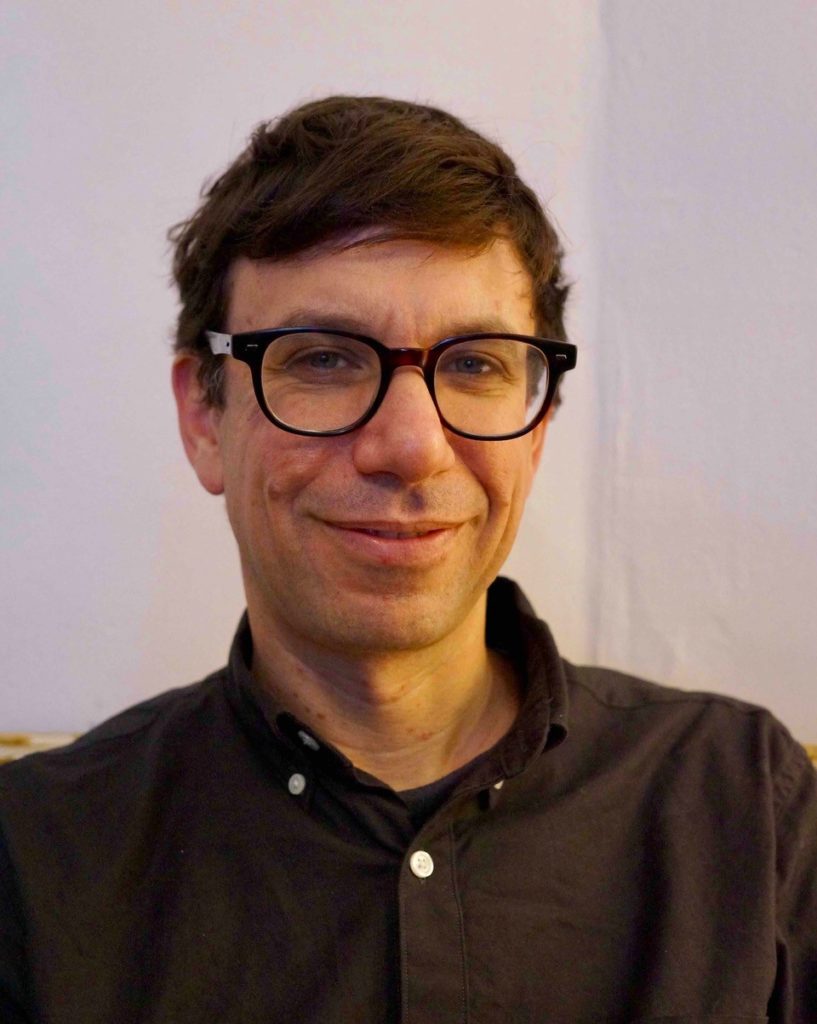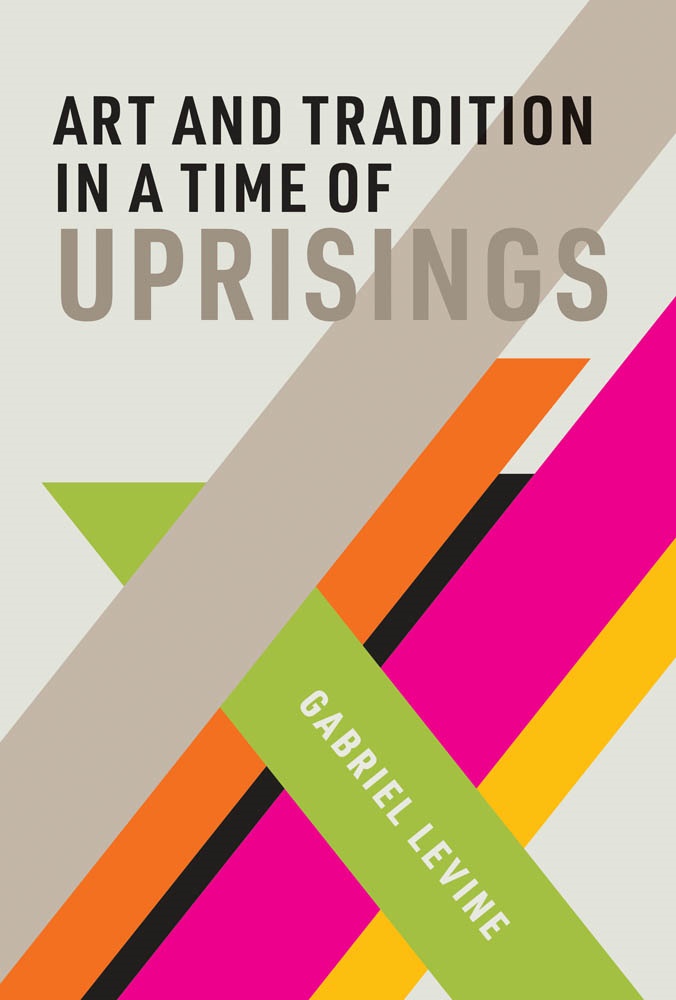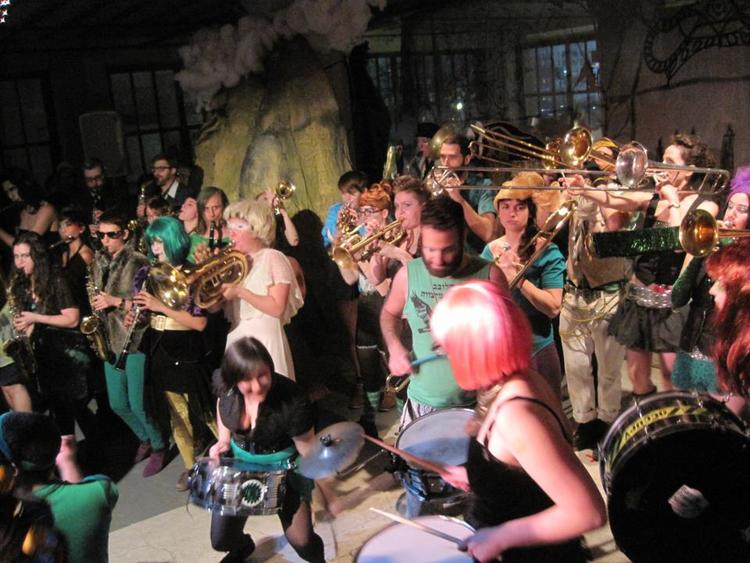A Glendon scholar’s new and profoundly intradisciplinary book suggests that experimenting with traditional practices from the past could help us grapple with today’s challenging times. He profiles three such practices and investigates the restorative powers therein.
York is an exceptionally diverse community working together to tackle complex societal challenges. One academic in the Drama Studies department at Glendon is proving this in spades. Professor Gabriel Levine released a book from MIT (Massachusetts Institute of Technology) Press earlier this year, which argues that, in a time of political reaction and mass uprisings, we could all benefit from experimenting with the past. Cultural practices of the past could, in fact, galvanize artists, activists, musicians and people in everyday life.

Art and Tradition in a Time of Uprisings, based on research from Levine’s dissertation, seems perfectly timed, given world events. The publication is not, however, rooted in today’s upheavals, nor is it limited to one or two disciplines; it draws on a myriad of diverse situations and practices.
“My new book examines radical reinventions of traditional practices, ranging from a queer reclamation of the Jewish festival of Purim to an Indigenous remixing of musical traditions,” Levine explains.
This sweeping approach is at the heart of Levine’s scholarly and creative enquiries. “I’m interested in projects that are off the beaten track, multidisciplinary and formally inventive,” Levine, who teaches theatre and performance theory, practice, and history, as well as courses across the humanities, explains.
Levine is also an arts writer, performance-maker and singer-songwriter. He is co-curator of the Concrete Cabaret performance series, Toronto’s experimental puppetry and performing objects cabaret, and his theatre projects have toured festivals in Europe, North America and the Middle East. He co-edited Practice, part of an MIT Press series on contemporary art, the first anthology of artists writings dealing with the concept of “practice” in contemporary art.

He has also written for publications including the Journal of Curatorial Studies, Performance Research, PUBLIC: Art/Culture/Ideas, TOPIA: Canadian Journal of Cultural Studies and Canadian Theatre Review. As a musician, he has released numerous recordings on Constellation Records and other labels.
Clearly, the rigid lines among various branches of learning and creativity are wonderfully blurred for Levine, and this has led to many fruitful creative ventures.
Book focuses on three cultural practices that reinvent traditions
As noted, Levine’s new book investigates the recovery and reclamation of cultural practices that supposedly belong to the past. More specifically, his publication profiles three, collective projects or experiments that, at first glance, seem markedly unrelated.
Project A: A queer, festive and politicized reclamation of Jewish ritual. Here, Levine profiles the annual Purim Extravaganza, which gathers queer, leftist and ‘Yiddish-ist’ New Yorkers in a profane re-appropriation of the springtime Jewish festival.
Purim is a Jewish holiday that commemorates the saving of the Jewish people from Haman, a Persian Empire official who was planning to kill all the Jews, as recounted in the Book of Esther.

Project B: An Indigenous remixing of several musical traditions. In this section of the book, the author studies the Ottawa-based Indigenous DJ collective A Tribe Called Red, who combine powwow drumming and singing with electronic dance music.
“Focusing on performance in present-day settler-colonial North America, the book offers alternatives to the dominant modes of appropriating ‘tradition’ as heritage or property,” Levine says.
Project C: A food movement that revives traditional techniques of home fermentation. Here, the author considers the revival of home fermentation practices from microbiological, philosophical, aesthetic and political angles.
By grappling with the traditional, these projects work through complex histories
Levine explains the galvanizing thesis that unites these seemingly disparate practices: “In their various ways, these experiments grapple with tradition across profound gaps in historical and cultural continuity. In so doing, they work through complex histories of colonization, shame, discontinuity and damage, while moving toward spaces of shared capacity and collective action.”
Importantly, he notes that in all three experiments or projects, “strange encounters take place across the lines of class, Indigeneity, race and generations. These encounters spark alliance and appropriation, desire and misunderstanding, creative (mis)translation and radical revisionism.”
Projects work toward collectively reclaiming, remaking and repairing a damaged world
Levine has really hit on something that will resonate with many audiences. In the digital age, and perhaps even more so with the pandemic, supposedly outmoded ways of doing things are flourishing. People are cooking and crafting, making music and returning to religious rituals.
“Experimenting with practices that have been abandoned or suppressed can offer powerful resources for creation and struggle in the present,” he says. “These projects not only develop innovative forms of practice for a time of uprisings; they can also work toward collectively reclaiming, remaking, and repairing a damaged world.”
The book has garnered international praise.
To read more about Levine, visit his website. To learn more about the book, visit the website. To listen to some of Levine’s music, see his music website.
To learn more about Research & Innovation at York, follow us at @YUResearch; watch our new animated video, which profiles current research strengths and areas of opportunity, such as Artificial Intelligence and Indigenous futurities; and see the snapshot infographic, a glimpse of the year’s successes.
By Megan Mueller, senior manager, Research Communications, Office of the Vice-President Research & Innovation, York University, muellerm@yorku.ca
